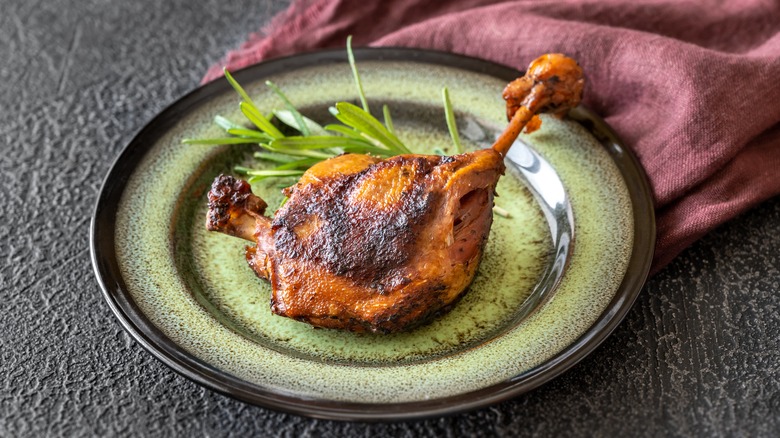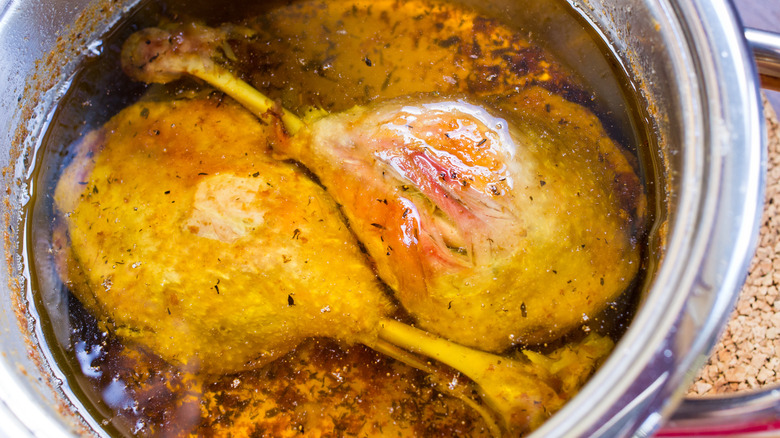The Temperature You Should Be Cooking Confit At
While most of us probably only tuck into confit — be it of the duck variety or other confited meats such as pork carnitas (via Serious Eats) — at a restaurant or taco truck, this method of cooking meat in a large quantity of slowly bubbling fat (via Food52) is one that most of us should feature more frequently in our lineup of kitchen techniques. Confited meats such as pork rillettes and chicken take a few hours to slowly poach in fat, but the technique is dead-simple and turns out proteins that are "soft, tender, and juicy," as Ashish Alfred, owner of Alfred Restaurant Group, told Tasting Table.
Making confit isn't complicated — but there are a few key points you'll want to have in mind before you get out your jar of lard. And one of those is making sure that bubbling fat is heated to the right temperature as you confit.
Low and slow is the way to go with confit
Typically, when we think about cooking food in a large volume of oil or fat, the technique that comes to mind is deep-frying. But as Ashish Alfred, owner of Alfred Restaurant Group, explained, confiting could not be further from deep-frying, as it employs a much lower temperature. "There is not a fine line between deep-frying and confit — they are two very different things," he told Tasting Table. "By definition — the proper technique is low and slow."
If you're interested in confiting duck or even fresh tuna at home, keep in mind you won't be deep-frying the food, but rather maintaining a gentle simmer as the ingredient cooks in the fat. Whereas deep-frying requires you to typically heat oil to between 325 and 450 degrees Fahrenheit, according to Serious Eats, confiting calls for a much more moderate temperature of about 200 degrees Fahrenheit. After all, confiting has the end goal of creating soft, tender meat, and not a crispy crust: "I recommend cooking duck confit at 200 or 225 degrees," Alfred said. "If it's too high, you risk deep-frying and losing the soft, unctuous texture."

